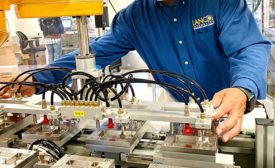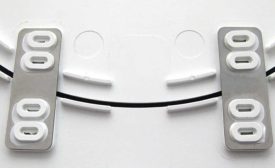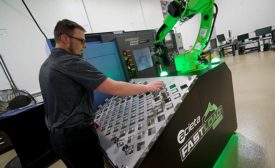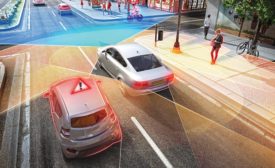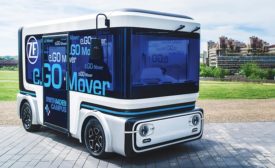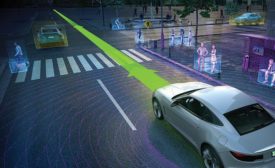Featured on Home Page
Automated Assembly Systems: Trimming the Timeline
A proven project management plan and prompt client feedback are essential for integrators to build fully and semiautomated assembly systems on short deadlines.
September 15, 2020
Staking for Plastic Parts Assembly
New technologies are solving challenges in staking plastic parts
September 15, 2020
Preconfigured Robot Workcells Enable Ready-to-Go Automation
Standardized, pre-engineered robotics appeal to many types of manufacturers.
September 15, 2020
Autonomous Vehicles go Beyond the Blacktop
Autonomous off-highway vehicles are a growing presence around the globe, from Norwegian mines to Brazilian sugar cane fields, and while limited access sites foster more controllable environments, rough and tumble usage raises a host of other challenges.
September 14, 2020
Accelerating electric drive
Navigant says that plug-in electric vehicle sales last year doubled in North America, and sales in Europe and China increased 39% and 77%, respectively. And by 2030, annual PEV sales are estimated to be between 15% and 32% of the global light-duty vehicle market.
September 14, 2020
Sensors and sensibility
The companies building tomorrow’s autonomous vehicle sensors are looking to go beyond current radar and camera limitations to identify obstacles and eliminate car crashes, greatly improving the safety of automated driving systems.
September 11, 2020
Autonomous vehicle opportunities and challenges
Recent industry developments are looking to save lives, reduce injuries, and spread mobility equitably, but education—of developers and consumers—is one important element to AV technology development and adoption.
September 10, 2020
Driven by data
The twin technologies of big data and machine technology will have to work together in order to propel autonomous vehicle development forward, and industry players from automakers to chipmakers are gearing up for a long and winding road.
September 10, 2020
Never miss the latest news and trends driving the manufacturing industry
Stay in the know on the latest assembly trends.
JOIN TODAY!Copyright ©2024. All Rights Reserved BNP Media.
Design, CMS, Hosting & Web Development :: ePublishing

